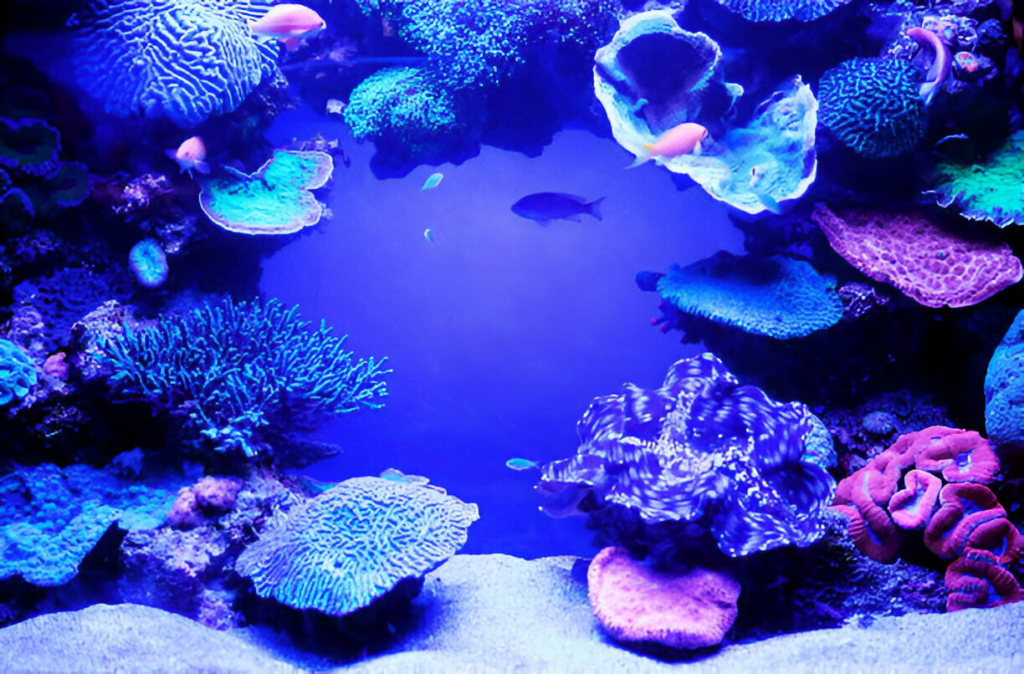Isn’t it strange how fish require their own ideal water environment to live and cannot simply swim anywhere? Water appears to be the same everywhere, but freshwater and saltwater species differ greatly. Marine fish control their salt levels naturally, whereas non saline water fish must work hard to retain salt and remove excess water. These adaptations are difficult to swap. So, saltwater fish cannot swim in freshwater.

Why Can’t Saltwater Fish Live In Freshwater?
You know how you can drink too much water and feel like you’re about to burst? That’s exactly what happens to saltwater fish when they’re put in freshwater! Their bodies are saturated with salt. If they come into contact with lake water, the water rushes into their bodies, causing their cells to swell like water balloons before popping. Let’s explore the reasons why saltwater fish struggle in freshwater.
Osmoregulation
In the ocean, saline water is hypertonic to fish, which means they have less salt in their bodies. Water constantly exits through their gills and skin, so saline water fish like anemonefish and barracudas drink a lot to stay hydrated. They remove extra salt through their gills and urinate.
In freshwater, the situation reverses. Freshwater fish, such as bass or catfish, consume water and must urinate often to eliminate the surplus. But what happens if they move into saltwater? They’d dehydrate soon.
Tonicity
The reason why saltwater fish cannot live in freshwater and vice versa is due to a feature known as tonicity. Tonicity is simply how any solution changes osmotic pressure over a semipermeable membrane.
Tonicity is classified into three forms, but let’s focus on the two most common. A hypotonic solution contains fewer solutes outside the cell than inside, whereas a hypertonic solution contains more solutes outside than within. Such variations make survival difficult for fish that switch between fresh and saline seas!
Oxygen Trouble
Freshwater isn’t just about the salt —it also presents an oxygen difficulty for saltwater fish. River water contains less oxygen than the ocean, making it difficult for these fish to obtain the oxygen they require. This can cause oxygen deprivation, adding to the stress of marine water fish trying to survive in a freshwater environment.
Osmotic Stress
When fish migrate between sea water and freshwater, they experience osmotic stress. As marine water fish enter aquatic water, the low salinity outside their body causes a significant problem. When the solution concentrations on both sides of a semipermeable membrane are similar, there is no need for water to pass the barrier, resulting in no osmotic pressure. The osmotic pressure rises as water passes through the membrane and into a more concentrated solution.
Unraveled Challenges
Osmotic stress is severe, causing cells to expand and resulting in major health problems. Freshwater fish in saltwater struggle to expel waste and maintain their internal equilibrium. Disrupted ion control only complicates matters, putting their bodily functions into crisis and making survival difficult.
Saltwater Vs Freshwater Habitats
Can saltwater fish survive in freshwater? – That’s an intriguing question. Get to know their distinct habitats—saltwater and freshwater. The salt concentrations of lake water are less than 0.5 parts per thousand, whereas sea water habitat has over 30 parts per thousand. This means freshwater and saline water have different requirements, and the fish species in both conditions should have unique features.
It’s a hard adjustment for marine fish to survive in river water because their bodies aren’t built for it. But is it completely impossible? Scientists are on the hunt, and they’ve discovered that, while it’s rare, some fish can inhabit both worlds.
What Happens If You Put A Freshwater Fish In Saltwater?
Osmosis regulates salt concentration in fish cells by transporting water and balancing solute levels. When you immerse a lake water fish in saltwater, the greater salt concentration outside its cells causes water to flow out of the fish, balancing the salt levels.
This loss of water causes dehydration and alters the fish’s internal equilibrium, making it difficult for the fish to live in the marine water environment. The semipermeable membranes surrounding the fish’s cells enable water to pass freely, but they cannot prevent the water outflow produced by the high salt outside.
How Long Can A Saltwater Fish Live In Freshwater?

Because of osmotic shock, saltwater fish adapted to high salinity conditions (35–40 ppt) face great physiological stress when put in freshwater (0–0.5 ppt). In general, time period of survival of different saltwater fish are:
• 1-3 minutes: Species like gobies and dragonets.
• 15-30 minutes: Species like butterflyfish and damselfish.
• 1-2 hours: Species like tangs and angelfish.
• 2-4 hours: Species like catfish and eels.
Survival time of saltwater fish in freshwater depends on various factors:
Different Species: Tolerance levels vary; certain species, such as eels and catfish, can survive for hours or even days, but other types such as groupers and snappers, might survive for just a few minutes.
Size and Health: Larger, healthier fish tend to live longer than smaller in size or stressed individuals.
Water Quality: Ideal factors (pH, temperature, oxygen levels) might help them survive a bit longer.
Adaptation: Slow salinity decline can help fish survive longer by allowing them to gently adjust.
The Exceptions: Euryhaline Fish and Molly Fish
Some fish are like nature’s superheroes, thriving in both saltwater and freshwater environments! Ever wondered how they do this trick? Euryhaline fish, including salmon and trout, are adept in adjusting their internal salt levels to fit changing waters. Some of these species can store extra salts to deal with salty environments as they fluctuate over the seasons.When Euryhaline enters non-saline water, it produces specific enzymes that remove excess salt. This allows them to balance out the decreasing salinity in the water and prevents their cells from getting stressed. Such fish can go from the ocean to rivers and streams to spawn. And what about molly fish? These little, colorful beauties grow in both salt and fresh water.












